 W
WIn the context of the history of the 20th century, the interwar period was the period between the end of the First World War on November 11, 1918 and the beginning of the Second World War on September 1, 1939. This period is also colloquially referred to as Between the Wars.
 W
WThe aftermath of World War I saw drastic political, cultural, economic, and social change across Eurasia, Africa, and even in areas outside those that were directly involved. Four empires collapsed due to the war, old countries were abolished, new ones were formed, boundaries were redrawn, international organizations were established, and many new and old ideologies took a firm hold in people's minds. World War I also had the effect of bringing political transformation to most of the principal parties involved in the conflict, transforming them into electoral democracies by bringing near-universal suffrage for the first time in history, as in Germany, Great Britain, and Turkey.
 W
WThe 1936–1939 Arab revolt in Palestine, later came to be known as The Great Revolt or The Great Palestinian Revolt, was a nationalist uprising by Palestinian Arabs in Mandatory Palestine against the British administration of the Palestine Mandate, demanding Arab independence and the end of the policy of open-ended Jewish immigration and land purchases with the stated goal of establishing a "Jewish National Home". The dissent was directly influenced by the Qassamite rebellion, following the killing of Sheikh Izz ad-Din al-Qassam in 1935, as well as the declaration by Hajj Amin al-Husseini of 16 May 1936 as 'Palestine Day' and calling for a General Strike. The revolt was branded by many in the Jewish Yishuv as "immoral and terroristic", often comparing it to fascism and Nazism. Ben Gurion, however, described Arab causes as fear of growing Jewish economic power, opposition to mass Jewish immigration and fear of the English identification with Zionism.
 W
WThe Asturian miners' strike of 1934 was a major strike action undertaken by regional miners against the 1933 Spanish general election, which redistributed political power from the leftists to conservatives in the Second Spanish Republic. The strike lasted two weeks from 4 October to 19 October 1934 in Asturias. The election led to the conservative Spanish Confederation of the Autonomous Right (CEDA), securing a parliamentary majority in the Spanish government on 6 October. The strike and subsequent demonstrations eventually developed into a violent revolutionary uprising in an attempt to overthrow the conservative regime. The revolutionaries took over the province of Asturias by force, killing a large portion of the region's inhabitants including police, religious leaders, and uncooperative civilians. Their initial entry into Asturias – armed with dynamite, rifles, and machine guns – culminated in the destruction of numerous religious institutions, such as churches and convents. The rebels officially declared a proletarian revolution and instituted their own local government in occupied territory. The rebellion was crushed by the Spanish Navy and the Spanish Republican Army, the latter using mainly colonial troops from Spanish Morocco.
 W
WThe Austrian Civil War, also known as the February Uprising, is a term sometimes used for a few days of skirmishes between Fascist and Socialist forces between 12 and 16 February 1934, in Austria. The clashes started in Linz and took place principally in the cities of Vienna, Graz, Bruck an der Mur, Judenburg, Wiener Neustadt and Steyr, but also in some other industrial cities of eastern and central Austria.
 W
WThe Beer Hall Putsch, also known as the Munich Putsch, was a failed coup d'état by Nazi Party leader Adolf Hitler, Generalquartiermeister Erich Ludendorff and other Kampfbund leaders in Munich, Bavaria, on 8–9 November 1923, during the Weimar Republic. Approximately two thousand Nazis marched on the Feldherrnhalle, in the city centre, but were confronted by a police cordon, which resulted in the deaths of 16 Nazi Party members and four police officers.
 W
WThe Bilthoven Meetings were a series of networking and capacity building meetings of pacifist activists after World War I in the town of Bilthoven in the Netherlands. The activists gathered under the name of Movement Towards a Christian International, which was later renamed to International Fellowship of Reconciliation. The meetings took place at the house of Kees Boeke, a Quaker missionary and pacifist.
 W
WThe Black Horror on the Rhine refers to a moral panic which was aroused in Germany and elsewhere concerning allegations of widespread crimes, especially sexual crimes, said to be committed by Senegalese and other African soldiers serving in the French Army during the French occupation of the Rhineland between 1918-1930. Die schwarze Schande or Die schwarze Schmach were terms used by right-wing press as German nationalist propaganda in opposition to these events. The colonial troops referred to were soldiers from Senegal, Vietnam, and Madagascar. The majority of colonial African soldiers were accused of committing rape and mutilation against the German population. The campaign reached its peak between 1920 and 1923, but did not stop until 1930. Adolf Hitler blamed Jews for bringing the Senegalese into the Rhineland.
 W
WIn the United Kingdom, the interwar period (1918–1939) was a period of peace and relative stability, though of economic stagnation. In politics the Liberal Party collapsed and the Labour Party became the main challenger to the dominant Conservative Party throughout the period. The Great Depression affected Britain less severely economically and politically than other major nations, although some areas still suffered from severe long-term unemployment and hardship, especially mining districts and in Scotland and North West England.
 W
WDuring the World Wars and Interwar Years Canada experienced economic gain, more freedom for women and new technological advancements.
 W
WThe Bombardment of Chefchaouen was an aerial bombardment of Chefchaouen, Morocco carried out in the middle of the Rif War by a rogue American squadron in the service of the French colonial empire on September 17, 1925.
 W
WThe Chinese Civil War was a civil war in China fought between the Kuomintang (KMT)-led government of the Republic of China (ROC) and the Communist Party of China (CPC) lasting intermittently between 1927 and 1949. The war is generally divided into two phases with an interlude: from August 1927 to 1937, the KMT-CPC Alliance collapsed during the Northern Expedition, and the Nationalists controlled most of China. From 1937 to 1945, hostilities were put on hold, and the Second United Front fought the Japanese invasion of China with eventual help from the Allies of World War II. The civil war resumed with the Japanese defeat, and the CPC gained the upper hand in the final phase of the war from 1945 to 1949, generally referred to as the Chinese Communist Revolution.
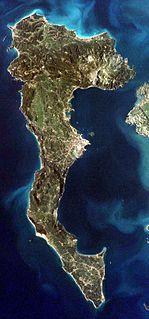 W
WThe Corfu incident was a 1923 diplomatic and military crisis between Greece and Italy. It was triggered when an Italian general heading a commission to resolve a border dispute between Albania and Greece was murdered in Greek territory along with members of his staff. In response, Benito Mussolini issued a severe ultimatum to Greece and, when it was not accepted in whole, dispatched forces to bombard and occupy Corfu. Mussolini defied the League of Nations and stated Italy would leave if it arbitrated in the crisis, and the Conference of Ambassadors instead eventually tendered an agreement favoring Italy. This was an early demonstration of the League's weakness when dealing with larger powers.
 W
WThe term Executed Renaissance is used to describe the generation of Ukrainian writers and artists of 1920s and early 1930s who were performing in the Ukrainian Socialist Soviet Republic and were executed or repressed by Stalin's totalitarian regime. The term was first suggested by Polish publicist Jerzy Giedroyc in his letter to Ukrainian literature researcher Yuriy Lavrinenko, who later used it as a title for the collection of the best literary works of that generation.
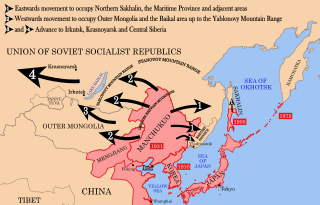 W
WHokushin-ron was a pre-World War II political doctrine of the Empire of Japan which stated that Manchuria and Siberia were Japan's sphere of interest and that the potential value to Japan for economic and territorial expansion in those areas was greater than elsewhere. Its supporters were sometimes called the Strike North Group. It enjoyed wide support within the Imperial Japanese Army during the interwar period, but was abandoned in 1939 after military defeat on the Mongolian front at the Battles of Khalkhin Gol and the signing of Soviet–Japanese Neutrality Pact in 1941. It was superseded by the diametrically-opposite rival policy, Nanshin-ron , which regarded Southeast Asia and the Pacific Islands as Japan's political and economic sphere of influence and aimed to acquire the resources of European colonies while neutralising the threat of Western military forces in the Pacific.
 W
WInterwar unemployment and poverty in the United Kingdom describes a period of poverty in Interwar Britain between the end of the First World War in 1918 and the start of the Second World War in 1939. Unemployment was the dominant issue of British society during the interwar years. Unemployment levels rarely dipped below 1,000,000 and reached a peak of more than 3,000,000 in 1933, a figure which represented more than 20% of the working population. The unemployment rate was even higher in areas including South Wales and Liverpool. The Government extended unemployment insurance schemes in 1920 to alleviate the effects of unemployment.
 W
WThe Italian invasion of Albania was a brief military campaign by the Kingdom of Italy against the Albanian Kingdom. The conflict was a result of the imperialist policies of Italian dictator Benito Mussolini. Albania was rapidly overrun, its ruler, King Zog I, forced into exile in neighbouring Greece, and the country made part of the Italian Empire as a protectorate in personal union with the Italian Crown.
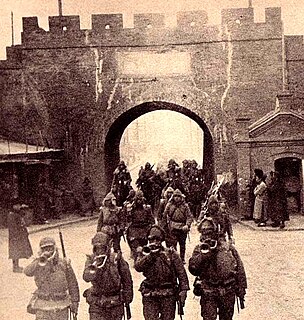 W
WThe Japanese invasion of Manchuria began on 18 September 1931, when the Kwantung Army of the Empire of Japan invaded Manchuria immediately following the Mukden Incident. At war’s end in February of 1932, the Japanese established the puppet state of Manchukuo. Their occupation lasted until the success of the Soviet Union and Mongolia with the Manchurian Strategic Offensive Operation in mid-August of 1945.
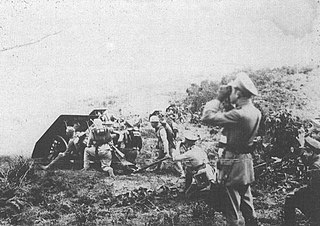 W
WThe Leticia Incident, also called the Leticia War or the Colombia–Peru War, was a short-lived armed conflict between Colombia and Peru over territory in the Amazon rainforest. In the end, they reached an agreement to divide the disputed area between them.
 W
WThe Mukden Incident, or Manchurian Incident, was an event staged by Japanese military personnel as a pretext for the 1931 Japanese invasion of Manchuria.
 W
WMuseum railway station is a heritage-listed underground commuter rail station that is located on the City Circle route at the southern end of Hyde Park in the Sydney central business district of New South Wales, Australia. The station is served by Sydney Trains T2 Inner West & Leppington and T3 Bankstown T8 Airport & South lines. The station is named after the nearby Australian Museum. It was added to the New South Wales State Heritage Register on 2 April 1999.
 W
WNeoclassicism in music was a twentieth-century trend, particularly current in the interwar period, in which composers sought to return to aesthetic precepts associated with the broadly defined concept of "classicism", namely order, balance, clarity, economy, and emotional restraint. As such, neoclassicism was a reaction against the unrestrained emotionalism and perceived formlessness of late Romanticism, as well as a "call to order" after the experimental ferment of the first two decades of the twentieth century. The neoclassical impulse found its expression in such features as the use of pared-down performing forces, an emphasis on rhythm and on contrapuntal texture, an updated or expanded tonal harmony, and a concentration on absolute music as opposed to Romantic program music.
 W
WThe Incident at Petrich, or War of the Stray Dog, was a Greek–Bulgarian crisis in 1925, which resulted in a brief invasion of Bulgaria by Greece near the border town of Petrich after the killing of a Greek captain and a sentry by Bulgarian soldiers.
 W
WThe Occupation of the Rhineland from 1 December 1918 until 30 June 1930 was a consequence of the collapse of the Imperial German Army in 1918. Despite Germany's proving victorious on the eastern front following the Russian Revolution, the military high command had failed to prevent the continuing erosion of morale, both domestically and in the army. Despite transferring veteran troops from the eastern front to fight on the western front, the Spring Offensive was a failure and following the outbreak of the German Revolution, Germany's provisional government was obliged to agree to the terms of the 1918 armistice. This included accepting that the troops of the victorious powers occupied the left bank of the Rhine and four right bank "bridgeheads" with a 30 kilometres (19 mi) radius around Cologne, Koblenz, Mainz and a 10 kilometres (6 mi) radius around Kehl. Furthermore, the left bank of the Rhine and a 50 kilometres (31 mi)-wide strip east of the Rhine was declared a demilitarized zone. The Treaty of Versailles repeated these provisions, but limited the presence of the foreign troops to fifteen years after the signing of the treaty. The purpose of the occupation was on the one hand to give France security against a renewed German attack, and on the other to serve as a guarantee for reparations obligations. After this was apparently achieved with the Young Plan, the occupation of the Rhineland was prematurely ended on 30 June 1930. The administration of occupied Rhineland was under the jurisdiction of the Inter-Allied Rhineland High Commission with its seat at the Upper Presidium of the Rhine Province in Koblenz.
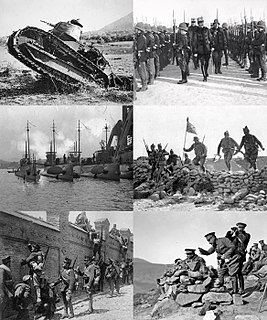 W
WThe Rif War was an armed conflict fought from 1920 to 1927 between the colonial power Spain and the Berber tribes of the Rif mountainous region of Morocco. Led by Abd el-Krim, the Riffians at first inflicted several defeats on the Spanish forces by using guerrilla tactics and captured European weapons. After France's military intervention against Abd el-Krim's forces and the major landing of Spanish troops at Al Hoceima, considered the first amphibious landing in history to involve the use of tanks and aircraft, Abd el-Krim surrendered to the French and was taken into exile.
 W
WRusyns and Ukrainians in Czechoslovakia during the period from 1918 to 1938, were ethnic Rusyns and ethnic Ukrainians of the First Czechoslovak Republic, representing two main ethnic communities in the most eastern region of Czechoslovakia, known during that period as the Subcarpathian Rus.
 W
WThe Second Italo-Ethiopian War, also referred to as the Second Italo-Abyssinian War, was a war of aggression which was fought between Italy and Ethiopia from October 1935 to February 1937. It is seen as an example of the expansionist policy that characterized the Axis powers and the ineffectiveness of the League of Nations before the outbreak of World War II.
 W
WThe Second Italo-Senussi War, also referred to as the Pacification of Libya, was a long, bloody conflict that occurred during the Italian colonization of Libya between Italian military forces and indigenous rebels associated with the Senussi Order. The war lasted from 1923 until 1932, when the principal Senussi leader, Omar al-Mukhtar, was captured and executed.
 W
WThe Singapore strategy was a naval defence policy of the British Empire that evolved in a series of war plans from 1919 to 1941. It aimed to deter aggression by the Empire of Japan by providing for a base for a fleet of the Royal Navy in the Far East, able to intercept and defeat a Japanese force heading south towards India or Australia. To be effective it required a well-equipped base; Singapore, at the eastern end of the Strait of Malacca, was chosen in 1919 as the location of this base; work continued on this naval base and its defences over the next two decades.
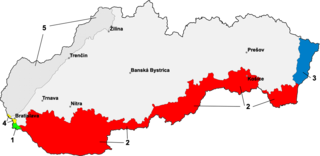 W
WThe Slovak–Hungarian War, or Little War, was a war fought from 23 March to 31 March 1939 between the First Slovak Republic and Hungary in eastern Slovakia.
 W
WSlovo Building is a residential multi-storey building located in the Shevchenkivskyi District of Kharkiv. Built at the end of 1920s, it housed many Ukrainian writers and poets who later were murdered by the Soviet regime in Sandarmokh and better known as the Executed Renaissance.
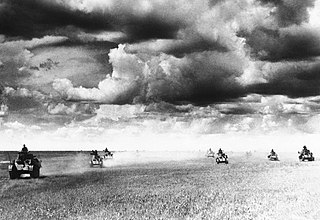 W
WThe Soviet–Japanese border conflicts, also known as the Soviet-Japanese Border War, was an undeclared border conflict fought between the Soviet Union and Japan in Northeast Asia from 1932 to 1939.
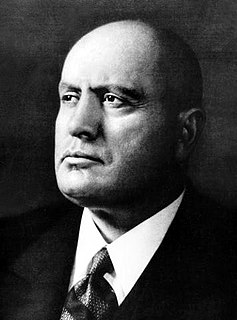 W
WThis timeline of events preceding World War II covers the events of the interwar period (1918–1939) after World War I that affected or led to World War II.
 W
WThe Vlora War or the War of 1920 was a series of battles between Italian forces garrisoned throughout the Vlorë region of Albania and Albanian nationalists, who were divided into small groups of fighters. The war lasted three months until an armistice; it had great impact in the struggle of Albania for the safeguard of its territories while Albanian borders and future were discussed in the Paris Peace Conference. The Vlora War is seen as a turning point in the establishment of Albanian independence.
 W
WThe Weimar Republic is a historical designation for the German federal state that existed from 1918 to 1933. The state was officially the German Reich, and was also referred to as the German Republic. The term "Weimar Republic" refers to the city of Weimar, where the republic's constituent assembly first took place. In English the country was usually simply called "Germany," and the term "Weimar Republic" did not become common until the 1930s.